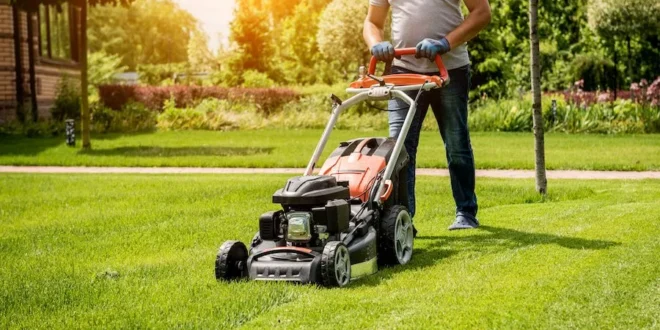Are you struggling to keep your lawn looking lush and green throughout the year? Battling against Mother Nature can be a daunting task – but don’t worry, we’ve got you covered!
In this article, we’ll provide you with top tips for lawn maintenance in every season. So, grab your gardening tools, and let’s get started!
Spring Lawn Maintenance Tips
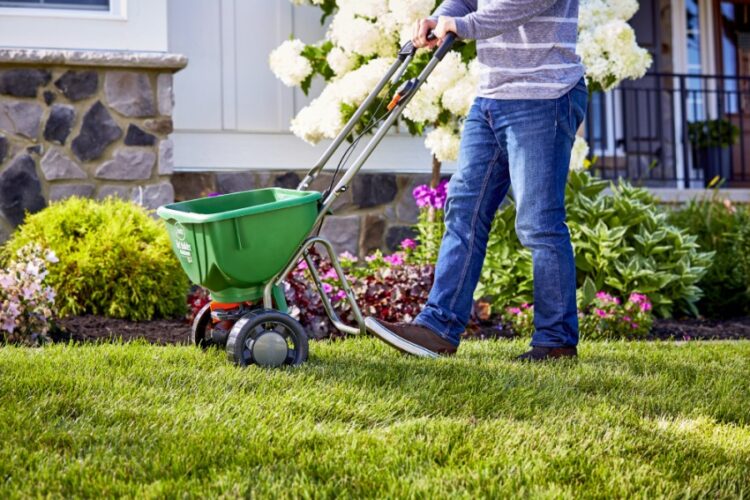
They require regular maintenance in order to maintain a healthy and attractive landscape. In the spring, lawns need to be prepared for the warmer summer months ahead and proper steps must be taken to achieve success. Following these care tips can help you have a lush lawn all season long.
It should begin with a thorough raking of the lawn. Raking helps remove unwanted leaves and twigs left over from the winter months, contributes to the aeration of the soil, and helps prevent the settling of thatch which can lead to water runoff issues or create a breeding ground for disease and pests. Be sure not to over-rake; just enough to loosen up any clumps of dead material is best. As you prepare your lawn for the warmer months ahead, consider hiring a professional landscaping company like College Fund Landscaping to help you achieve optimal results.
Next, it’s time to add fertilizer or other soil amendments such as compost, grass seed, lime, or gypsum so that your lawn is able to withstand summer temperatures as well as any extreme weather conditions. Additionally, check your mower blades for proper sharpening so that each blade of grass is being trimmed cleanly instead of torn off at an angle that could damage new growth or encourage pests. Finally, make sure your irrigation system is functioning properly after its winter hiatus in order to allow water-efficient distribution across your entire yard when needed.
Summer Lawn Maintenance Tips
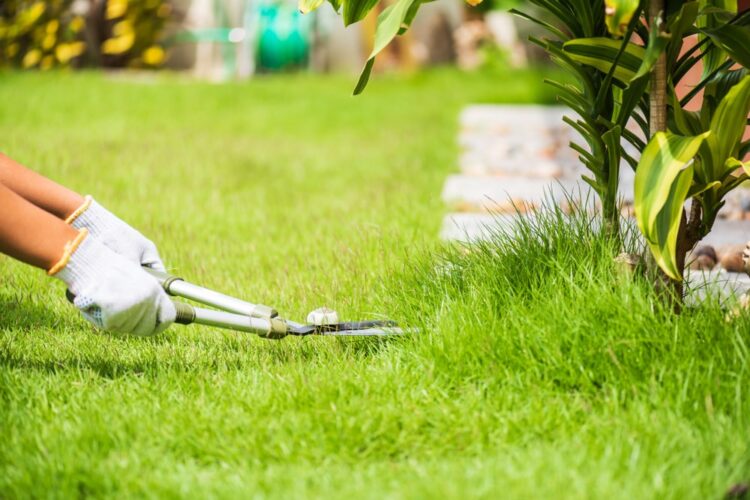
Lawn care in the summertime requires extra focus on water conservation and pest control. It’s important to maintain a well-hydrated lawn for its overall health, especially during extreme heat and dry spells. Here are some tips to keep in mind:
- Water your lawn early in the morning or in the evening when temperatures are cooler.
- Adjust your irrigation system so that you are only delivering an inch of water each week. Too much water can cause fungus growth and root rot issues.
- Keep an eye out for signs of pests such as insects, grubs, weeds, disease, and fungi which can cause extensive damage to turfgrass if left untreated. Inspect your lawn regularly to spot problems early on before they become worse.
- Have a professional apply pre-emergent herbicides to protect against weeds throughout the season. You may also want to consider aerating your soil periodically throughout the hot months to help relieve compaction caused by heavy foot traffic or lawn equipment use that results in poor drainage during rainy days.
Fall Lawn Maintenance Tips
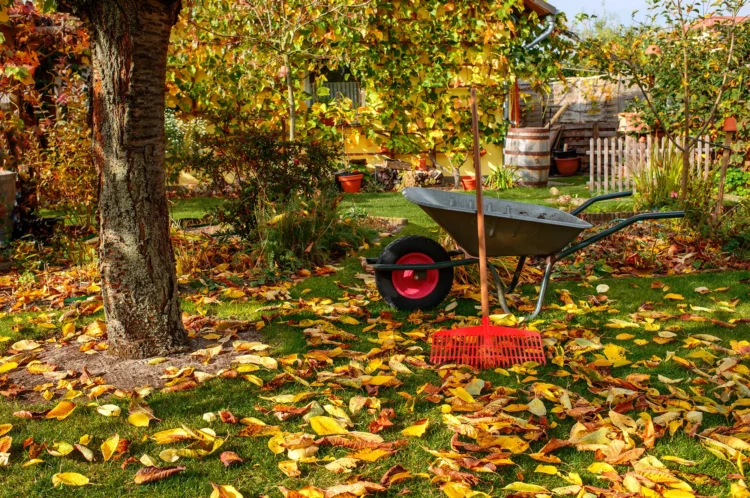
As fall approaches and the temperature begins to cool, these care activities follow a slightly different routine. Cool-season grasses, such as fescue and rye, begin growing in late summer when temperatures are lower and need less mowing as the season progresses. Other warm-season grasses, like Bermuda or zoysia, may need to be mowed one last time before cooler weather arrives. The following tips will help you ensure your lawn looks its best throughout the fall and beyond.
Generally speaking, mowing is needed only once or twice during the fall season for cool-season grasses like fescue or rye. When you do mow it during this time, set your mower height to about 2 ½ inches — this will minimize damage to the turf while allowing more sunlight to reach tender new growth at the soil surface. If you’re unsure of how much you need to mow off each time, try removing only one-third of the total blade length with each pass of your machine; that way you can gradually bring down the height without compromising plant health.
Fertilizing fall is a great time to fertilize your yard. Applying a slow-release fertilizer will provide nutrients throughout the entire season without overwhelming delicate root systems with too much nitrogen at once. This is especially important for cool-season lawns which start actively growing again in mid to late summer — make sure not to neglect them if you’re hoping for a healthy lawn come winter! As always, make sure you apply any fertilizer according to package directions and consider professional help if needed
Weed control weeds are pesky all year round but they can be especially detrimental come autumn when they’re competing with turf grasses for soil nutrients — so it’s important to keep up on weed control as best as possible throughout fall months. Hand-pulling weeds is usually adequate to control but if needed, spot treating with herbicides can take care of larger infestations quickly and easily (just make sure you read instructions on any product before use).
Winter Lawn Maintenance Tips
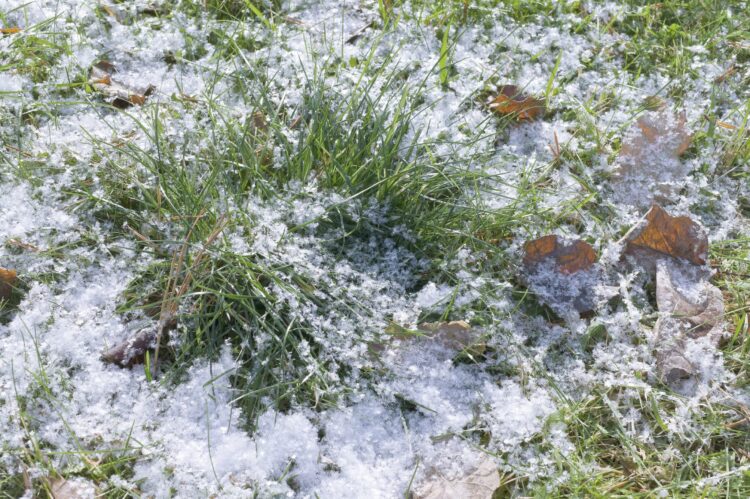
They require special treatment in the winter months to ensure that they survive until warmer temperatures arrive and nourish new growth. There are several tips you can keep in mind when it comes to maintaining a healthy lawn during the winter season.
First, try to avoid walking on frozen grass during particularly cold spells. This puts unnecessary stress on newly formed roots. Additionally, it is important to set up curved metal edging around your lawn before the snow arrives. This will ensure that snow is shoveled off evenly and does not gather in any one area of the property.
Since intense cold causes grass blades to curl up instead of presenting a strong surface for deflecting snow, regularly throw handfuls of sand or fine clippings onto your grass in order to counteract the effects of frost heave.
Finally, try applying sluggish-release fertilizer in early February in order to get a few weeks’ heads start on spring growth. If possible, avoid using salty products near melting snow run-off points which could damage soil quality over time.
Conclusion
Successfully maintaining a lawn takes time and effort, no matter what season it is. The best way to protect your landscape investment is with a consistently well-planned lawn maintenance routine. Knowing which seasonal tips and strategies work best will help ensure your lawn stays healthy, attractive, and pest-free for years to come.
Consider employing the advice in this guide as you plan your seasonal tasks and take on the elements so that you can enjoy the beautiful results of your hard work all year round!
 Hi Boox Popular Magazine 2024
Hi Boox Popular Magazine 2024
